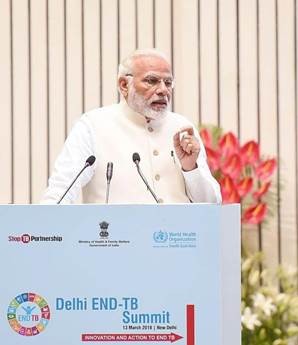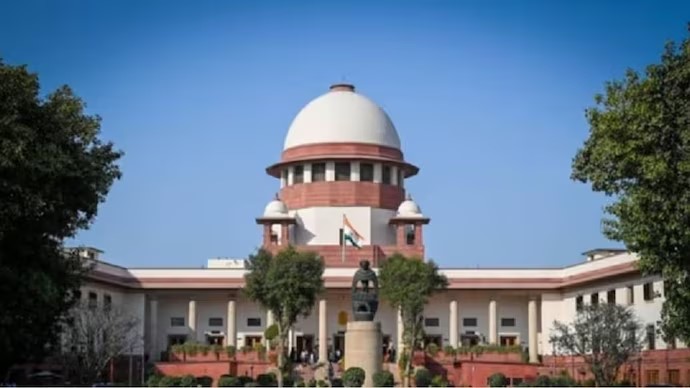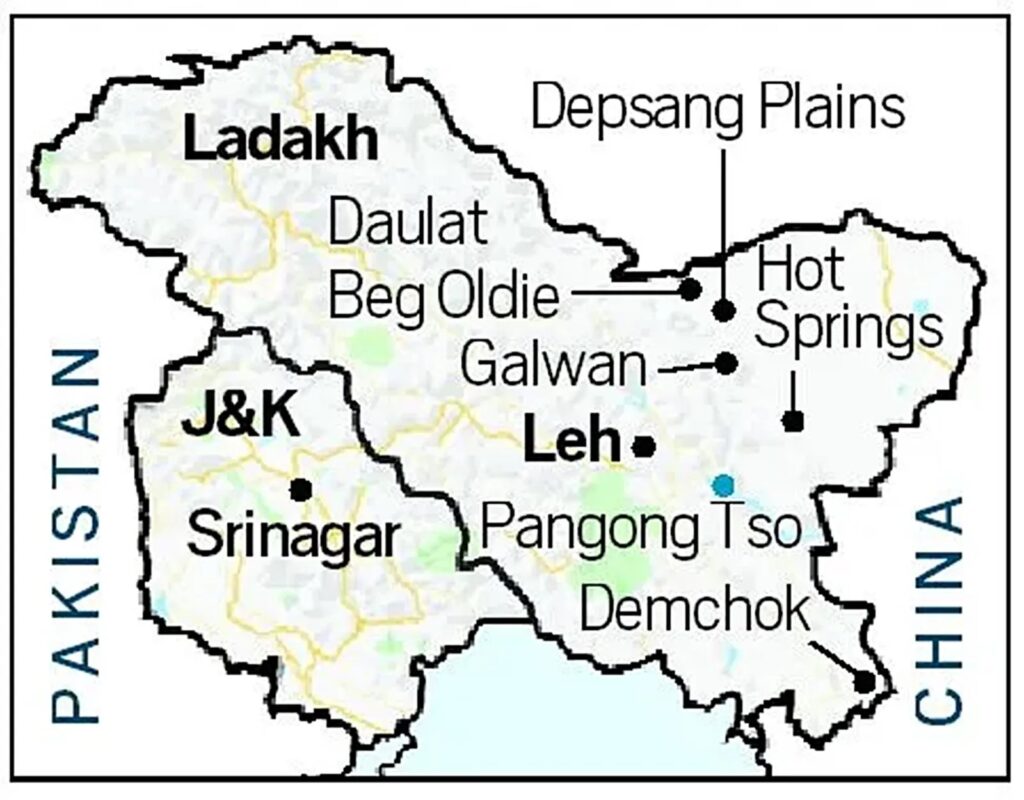Tuberculosis (Prelims & Mains- Science & Technology)
Why in News?
The World Health Organisation’s latest report on the global tuberculosis burden lists positives for India.

WHO data shows that India registered an 18 per cent decline in TB incidence in the past eight years compared to the global decline of 8 per cent. However, at this pace, the country will find it difficult to realise its target of eradicating the disease by 2025.
About Tuberculosis
- Tuberculosis (TB) is an infectious disease caused by bacteria Mycobacterium tuberculosis that most often affects the lungs. It is spread when people who are sick with TB expel bacteria into the air (e.g. by coughing).
- Tuberculosis (TB) is a communicable disease that is a major cause of ill health and one of the leading causes of death worldwide.
- Tuberculosis is preventable and curable.
Symptoms
People with TB infection don’t feel sick and aren’t contagious. Only a small proportion of people who get infected with TB will get TB disease and symptoms.
Babies and children are at higher risk.
TB disease occurs when bacteria multiply in the body and affect different organs. Some people with TB disease do not have any symptoms.
TB symptoms may be mild for many months, so it is easy to spread TB to others without knowing it.
Common symptoms of TB are: prolonged cough (sometimes with blood), chest pain, weakness, fatigue, weight loss, fever and night sweats.
The symptoms people get depend on which part of the body is affected by TB. While TB usually affects the lungs, it can also involve the kidneys, brain, spine and skin.
Transmission
TB germs can get into the air when a person with active TB disease of the lungs or throat coughs, speaks, or sings. These germs can stay in the air for several hours, depending on the environment.
Diagnosis
As the initial diagnostic test, the WHO recommends the use of rapid molecular diagnostic tests like Xpert MTB/RIF Ultra and Truenat assays.
The Xpert MTB/RIF ultra assay is an automated molecular test that has improved the detection of tuberculosis and rifampicin resistance, it is also sensitive in patients with paucibacillary disease or HIV.
A tuberculin skin test (TST), interferon gamma release assay (IGRA) or newer antigen-based skin tests (TBST) can be used to identify people with infection.
Treatment
Tuberculosis disease is treated with special antibiotics. Treatment is recommended for both
TB infection and disease.
The most common antibiotics used are: isoniazid, rifampicin, pyrazinamide, Ethambutol.
India’s Initiatives
1. National Tuberculosis Elimination Programme (NTEP)
The National Tuberculosis Elimination Programme (NTEP), previously known as Revised National Tuberculosis Control Programme (RNTCP), The National Strategic Plan for TB Elimination, was launched to achieve the target of ending TB by 2025 in a mission mode five years ahead of the Sustainable Development Goals.
In 2020, the RNTCP was renamed as the National TB Elimination Program (NTEP) to emphasise the aim of the Government of India to eliminate TB in India by 2025.
Universal Drug Susceptibility Testing (UDST) is implemented under the NTEP to ensure every diagnosed TB patient is tested to rule out drug resistance before or at the time of treatment initiation itself.
The National TB Elimination Programme implements key activities as under:
- State and District Specific Strategic plan for targeted interventions in high-burden areas.
- Provision of free drugs and diagnostics to TB patients including for drug-resistant TB.
- Active TB case-finding campaign in key vulnerable and co-morbid populations.
- Integration with Ayushman Bharat – Health & Wellness Centres to decentralise screening and treatment services closer to the community.
- Private sector engagement including incentives for notification and management of TB cases.
- Scale-up of molecular diagnostic laboratories to sub-district levels.
- Ni-kshay Poshan Yojana for nutritional support to TB patients.
- Intensified IEC campaigns to reduce stigma, raise community awareness and improve health-seeking behaviour.
- Multi-sectoral response with involvement of line ministries.
- Scale up TB preventive therapy to contacts of pulmonary TB.
- Tracking of notified TB cases through a case-based web-based portal – Ni-kshay.
2. Pradhan Mantri TB Mukt Bharat Abhiyan (PMTBMBA) (Ni-kshay Mitra Initiative)
- The Pradhan Mantri TB Mukt Bharat Abhiyaan was launched in 2022.
- The President also launched the Ni-kshay Mitra initiative to ensure additional diagnostic, nutritional, and vocational support to those on TB treatment, and encouraged elected representatives, corporates, NGOs, and individuals to come forward as donors to help the patients complete their journey towards recovery.
- The Ni-kshay 2.0 portal facilitates in providing additional patient support to improve the treatment outcome of TB patients, augmenting community involvement in meeting India’s commitment to end TB by 2025 and leveraging Corporate Social Responsibility (CSR) opportunities.
Kerala to probe creation of social media group for ‘Hindu IAS officers’ (Mains- Ethics)
Why in news?
The Kerala government will examine the controversial formation of a WhatsApp group for “Hindu IAS officers”, Industries Minister P. Rajeeve.

Requesting an inquiry into the matter, a complaint was lodged by an IAS officer, K Gopalakrishnan, with the Thiruvananthapuram Police Commissioner, alleging that his personal WhatsApp number was hacked and used to create a Hindu IAS officers’ religious group.
In the controversial WhatsApp group, officers from various communities were added, and the group was labelled as a “Hindu community group”. Upon noticing this, the officer immediately filed a complaint and disbanded the group.
This incident is “serious” as community-based divisions were highly concerned.
Leader of the Opposition V.D. Satheesan said the reported formation of such a WhatsApp group was a slur on the State. Fundamentalists infiltrated the State Administration.
There is a general code of conduct for IAS officers, governed by Central Civil Services (Conduct) Rules, 1964 of the Department of Personnel and Training.
What do Central civil service conduct rules say?
According to Central Civil Services (Conduct) Rules, 1964:
Rule No 3
(1) Every Government servant shall at all times–
- maintain absolute integrity;
- commit himself to and uphold the supremacy of the Constitution and democratic values;
- defend and uphold the sovereignty and integrity of India, the security of the State, public order, decency and morality;
Rule No 6.
No Government servant shall join or continue to be a member of an association, the objects or activities of which are prejudicial to the interests of the sovereignty and integrity of India, or public order or morality.
Quota-within-quota System (Prelims & Mains- Polity & Governance)
Why in news?
Recent debates have questioned whether a ‘quota-within-quota’ system is needed to ensure that affirmative action policies are more equitable across Scheduled Caste subgroups. Using data from six major States, one explores whether some SC castes have disproportionately benefited from reservations.

India’s reservation system has long been a tool for uplifting historically marginalised communities, particularly the Scheduled Castes (SCs) and Scheduled Tribes (STs).
Over 75 years since independence, questions are being raised about whether the system is serving its intended purpose — especially when some subgroups within the SCs appear to be benefiting more than others.
A deep dive into caste quotas
Dr. B.R. Ambedkar, the principal architect of the Indian Constitution, believed that formal legal equality (one person, one vote) would not be enough to dismantle the deeply entrenched inequalities of caste.
Thus, reservations were mandated to become a mechanism to move from legal equality to substantive equality by creating opportunities for SCs and STs in higher education, public sector jobs, and government institutions.
Despite its progressive aims, India’s reservation system is plagued by uneven outcomes. Some SC groups seem to have progressed more than others over the decades.
What data from different States tell us
In Andhra Pradesh, our estimates reveal that while there are slight differences between the two major SC groups — Malas and Madigas — the disparities are not significant enough to warrant subdivision of the quota.
In Tamil Nadu, where the two largest SC groups — Adi Dravida and Pallan —were almost indistinguishable in terms of socio-economic outcomes by 2019.
In Punjab, where the SC quota has been subdivided since 1975, the data suggests that this policy has led to better outcomes for more disadvantaged SC groups, such as the Mazhabi Sikhs and Balmikis. These groups, once marginalised even within the SC category, have begun to catch up to more advanced groups such as the Ad Dharmis and Ravidasis.
Bihar’s experiment with subdividing the SC quota into a “Mahadalit” category in 2007 is a cautionary tale. The policy eventually faltered as political pressure led to the inclusion of all SC groups in the Mahadalit category, effectively nullifying the purpose of the subdivision.
Is quota-within-quota the solution?
Supreme Court rulings have questioned whether a ‘quota-within-quota’ system is needed to ensure that affirmative action policies are more equitable across SC subgroups.
The idea of a ‘quota-within-quota’ is not without merit. In States like Punjab, where there is a clear disparity between SC subgroups, subdividing the quota has helped bring more disadvantaged groups into the fold. But this is not the case everywhere. In many States, like Andhra Pradesh and Tamil Nadu, the data suggests that there is little need for further subdivision, as the benefits of reservations are already being distributed fairly evenly across SC groups.
Moreover, the political motivations behind quota subdivision, as seen in Bihar, can often undermine the policy’s effectiveness. Decisions about who gets to be included in the most disadvantaged category are often driven by political expediency rather than empirical evidence. This dilutes the impact of affirmative action and risks turning the reservation system into a political tool rather than a genuine instrument for social justice.
India’s reservation system has undeniably helped lift millions out of poverty and into the middle class, but it is far from perfect. As debates around ‘quota-within-quota’ policies continue, the focus should remain on improving access to affirmative action for all SCs and addressing the larger disparities between SCs and upper-caste groups. If carefully implemented, reservations can continue to be a powerful tool for social justice — but only if the system is based on robust data and genuine need, rather than political calculations.
Courtesy – THE HINDU
https://www.thehindu.com/news/national/does-data-justify-subdivision-of-quotas/article68810384.ece
Disengagement at two friction Patrolling points in Ladakh (Prelims & Mains- IR)
Why in News?
Indian army resumes patrolling in Depsang.

Background
The Indian Army has successfully patrolled one of the five Patrolling Points in Depsang Ara of eastern Ladakh. This marks the resumption of patrolling in the area for the first time since disengagement and after the stand-off that began in May 2020.
The disengagement process at the Depsang and Demchok regions of eastern Ladakh has been completed between India and China On 30 October 2024 after four and a half years of military standoff along the Line of Actual Control (LAC) in 2020.
Recently, India and China reached an agreement on the patrolling arrangements along the Line of Actual Control (LAC) in eastern Ladakh. The disengagement process began on the 22nd of October and concluded on 30 October 2024, with both armies removing temporary tents and dismantling structures at the Depsang and Demchok areas.
During their meeting on the sidelines of the 16th BRICS Summit in Kazan, Russia, Prime Minister Narendra Modi and Chinese President Xi Jinping had agreed that the Special Representatives on the India-China boundary question will meet at an early date to oversee the management of peace and tranquillity in border areas and to explore a fair, reasonable, and mutually acceptable solution to the boundary question. As per the agreement, India and China have agreed to communicate in advance when conducting patrols in sensitive zones.
Following the disengagement process, coordinated patrolling will resume in the area. The Indian side has been striving to restore the situation to the status quo before April 2020, when Chinese military aggression triggered a prolonged standoff along the Line of Actual Control (LAC).
Rajnath Singh, speaking at the second Chanakya Defence Dialogue, highlighted that the agreement includes resuming traditional patrolling and grazing rights along the LAC.
The India-China border standoff, which began in 2020 following aggressive Chinese actions along the LAC in Eastern Ladakh, significantly strained relations between the two nations. The current disengagement efforts reflect a step toward de-escalating tensions and rebuilding diplomatic channels.
Geographical importance of Depsang Plains
To the north of Depsang is the Karakoram Pass. To its right is the Chinese-annexed Aksai Chin, across which runs the G219 highway that connects Tibet and Xinjiang provinces.
The Lingzi Thang mountain range divides the Depsang Plains from Aksai Chin.
Chip Chap River Valley, which opens into the Depsang Plains, is an offensive route from Aksai Chin into Ladakh.
Murgo, located on the southern edge of Depsang, now has a route to Sasoma in eastern Ladakh but is a combination of a jeep track and a foot trail. This path goes across the Saser La pass at about 17,000 ft. From Sasoma, there is a road into Gilgit Baltistan through Turtuk and Tyakashi (both on the Indian side).
If this (Saser La) pass is captured by the enemy, then they can threaten the route to Siachen,
any threat to Depsang can mean the Darbuk-Shyok-Daulat Beg Oldie (DS-DBO) road can be threatened. The 255-km long road connects Leh to the Karakoram Pass.


